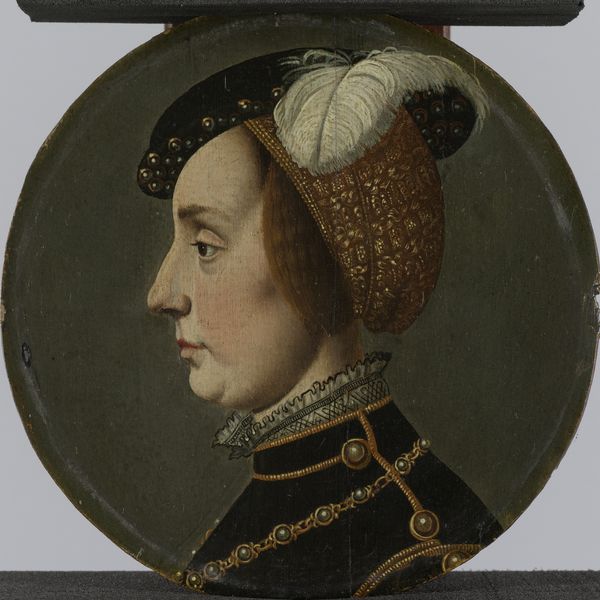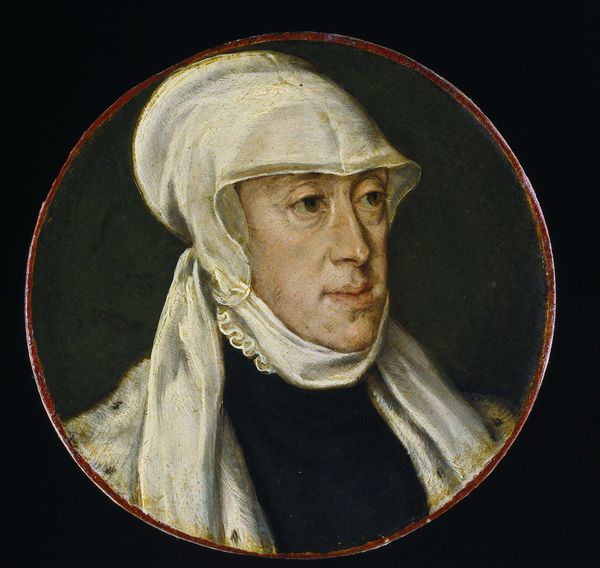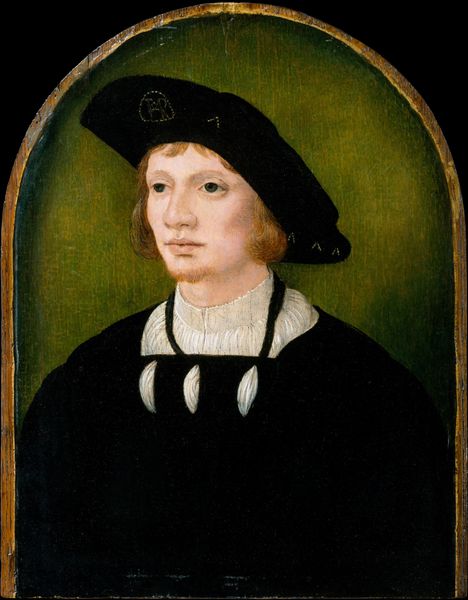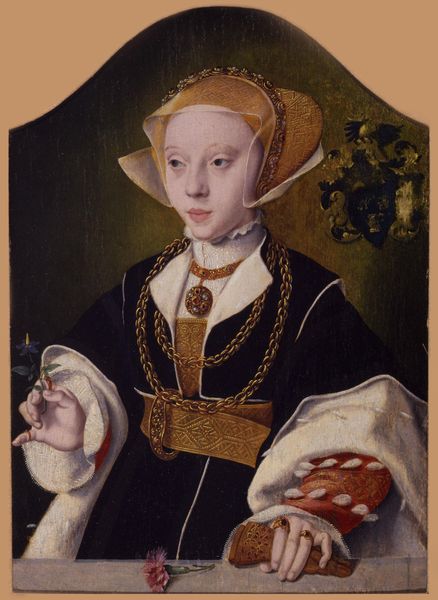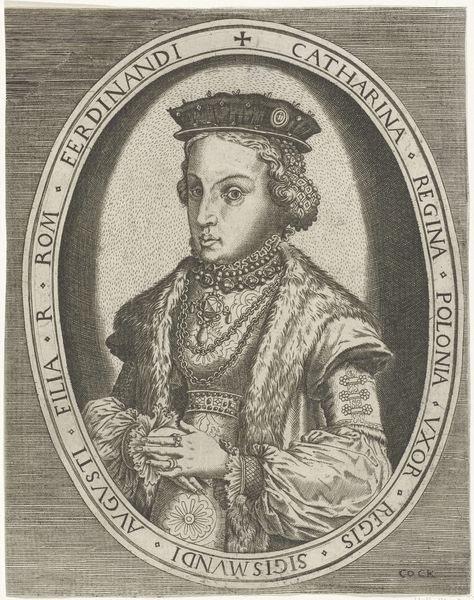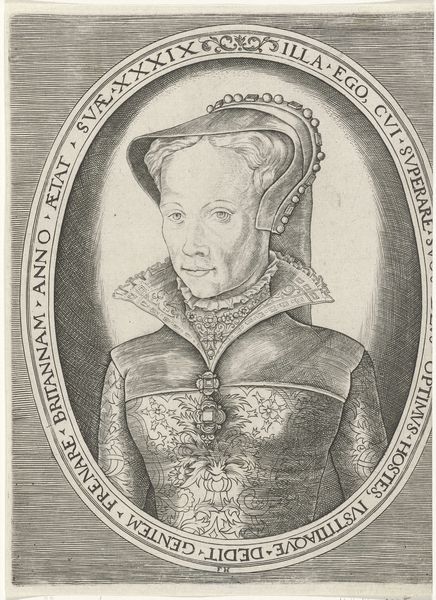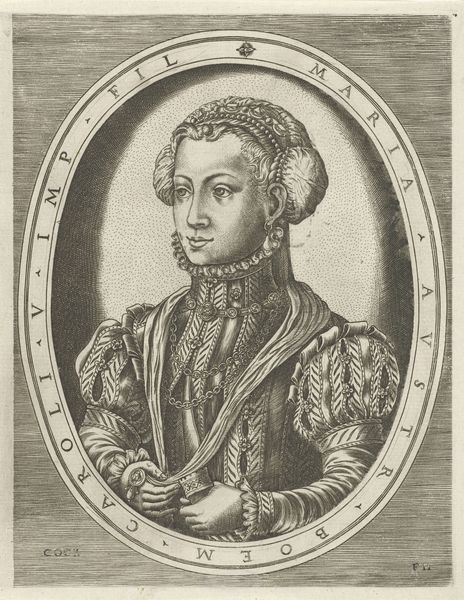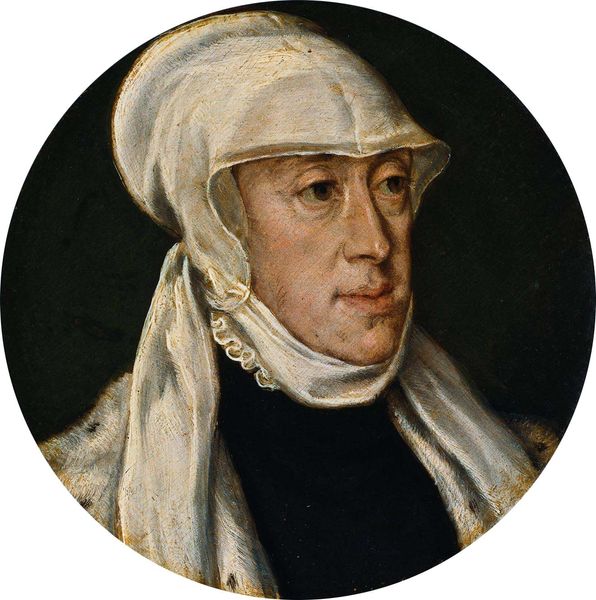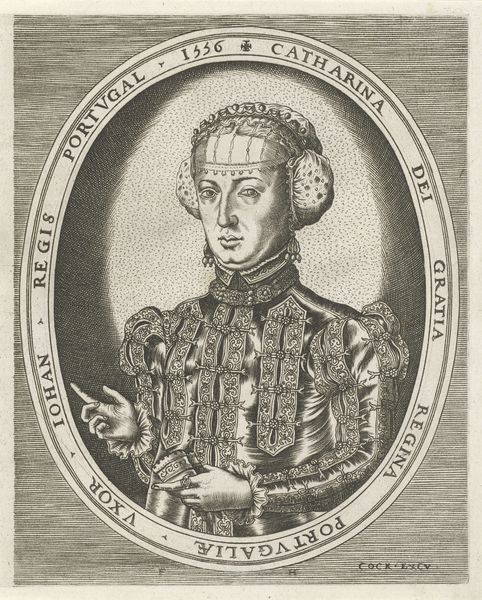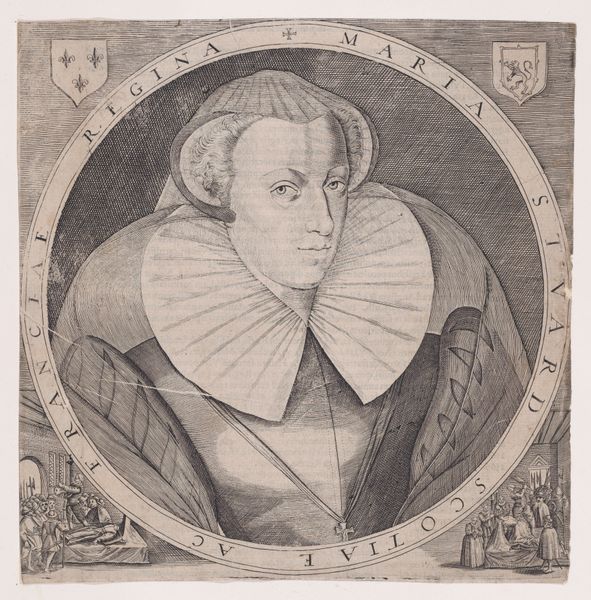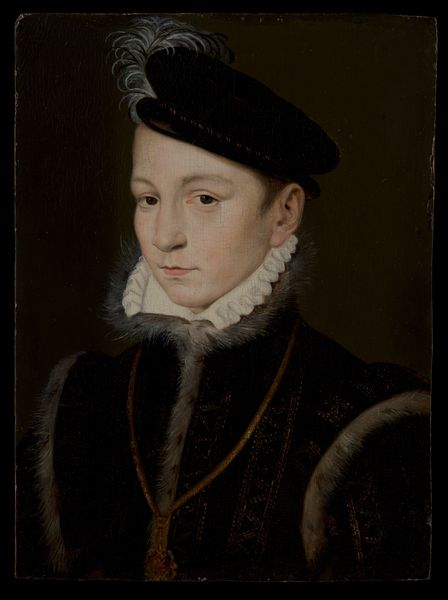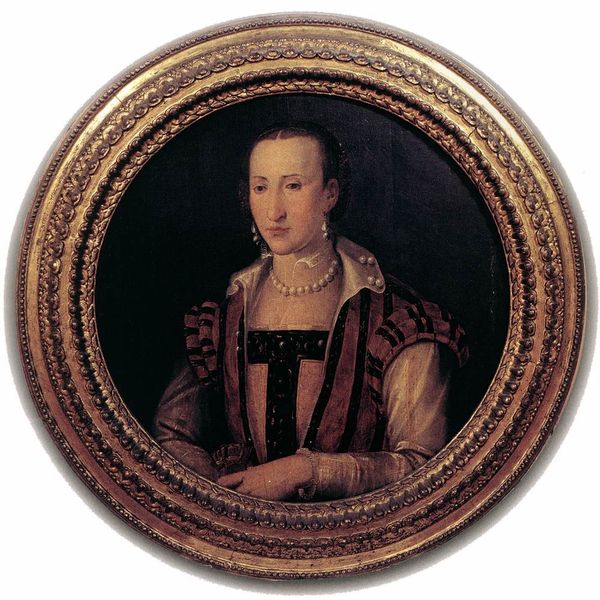
painting, oil-paint
#
portrait
#
painting
#
oil-paint
#
11_renaissance
#
history-painting
#
northern-renaissance
Copyright: Public domain
Curator: Hans Holbein the Younger painted this oil portrait of Mrs. Pemberton in 1535, during the Renaissance. Editor: My immediate impression is how austere it feels. The dark background and the sitter’s reserved expression create this cool, almost detached, ambiance. Curator: Holbein, known for his meticulous realism, offers a fascinating glimpse into the visual codes of the era. Notice her garments: they speak of status and the restricted palette reflects certain sumptuary laws dictating the use of colors and materials. Editor: And think about the painstaking process of rendering fabrics like that linen headdress, or the lace at her wrists! Oil paint, being relatively new, enabled artists to build up layers and capture light in new ways, resulting in these minute details. Was this commissioned, do we know? Curator: Undoubtedly. This was clearly a marker of identity and social standing. The small sprig she holds… it might represent remembrance or faithfulness. Editor: I'm struck by the craftsmanship and labor that went into not just the painting, but Mrs. Pemberton’s very existence – from weaving cloth to tailoring garments to extracting and grinding pigments. It points to entire economies fueled by display. Curator: Absolutely. Holbein, as a sought-after artist, captured the material world and also encoded symbolic weight that shaped people's views. Each item she is wearing had cultural value back in her days, now this is another source of visual communication in modern days. Editor: Reflecting on this artwork, it's amazing how an object seemingly documenting only one life also reflects an entire period's manufacturing prowess, trade, and cultural norms. Curator: Agreed, seeing Mrs. Pemberton, we can almost trace the symbols which speak of who she was.
Comments
No comments
Be the first to comment and join the conversation on the ultimate creative platform.
